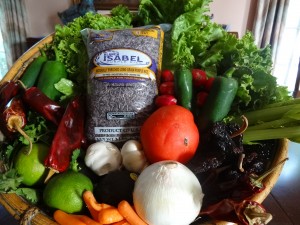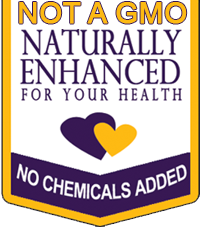Louisiana State University, Agricultural center
 Luis Alfaro, a PhD candidate at LSU, had developed and evaluated a frozen yogurt with nano-emulsions of purple rice bran oil (NPRBO). The U.S. frozen dessert business, including retail and foodservice markets, is the largest in the world. There is a need for deserts that offer better nutritional attributes, such as antioxidants than traditional deserts. Purple rice bran oil (PRBO) is an excellent source of natural antioxidants including tocopherol, tocotrienol, and oryzanol. Adding NPRBO to many products including frozen yogurts (FY) will improve the nutritional profile of the product by substantially increasing the natural antioxidant content. This fortification may have the potential to broaden the FY market.
Luis Alfaro, a PhD candidate at LSU, had developed and evaluated a frozen yogurt with nano-emulsions of purple rice bran oil (NPRBO). The U.S. frozen dessert business, including retail and foodservice markets, is the largest in the world. There is a need for deserts that offer better nutritional attributes, such as antioxidants than traditional deserts. Purple rice bran oil (PRBO) is an excellent source of natural antioxidants including tocopherol, tocotrienol, and oryzanol. Adding NPRBO to many products including frozen yogurts (FY) will improve the nutritional profile of the product by substantially increasing the natural antioxidant content. This fortification may have the potential to broaden the FY market.
http://etd.lsu.edu/docs/available/etd-11092012-124855/
Pennington Biomedical Research Center
Dr. Frank Greenway, Professor and Chief of Outpatient Clinic, is currently conducting experiment to determine if eating Blanca Isabel purple rice twice a day can improve a person’s blood glucose level and lower their cholesterol level more than brown rice.
http://www.pbrc.edu/clinical-trials/?studyid=142
United States Department of Agriculture (USDA)
Dr. Stephen Boue
Dr. Stephen Boue, a scientist for the USDA’s Southern Regional Research Center (SRRC) in New Orleans, is currently working on experiments to determine the bioactives (the beneficial or adverse effects of a drug on living matter) in Blanca Isabel purple rice.
Objective
Objective 1: Develop methods for enhancing bioactives in rice for applications in human diets to promote health.
Objective 2: Utilize rice starch as a matrix for the effective delivery of lipophilic bioactive compounds [e.g., Vitamin A, gamma oryzanol and related ferulate esters), Co-Q10, omega 3-DHA, lycopene, polyphenols] through the development of porous rice starch granules and beads, spherical aggregates, and nanocapsules. Objective 3: Test the performance of the starch encapsulates in model food systems.
Approach:
A continuous extraction system scalable for industrial production of soluble rice bran protein concentrates (>70% protein) and isolates (>90% protein) will be designed employing subcritical water. The subcritical water process will be designed to also allow separation of the lipids with their associated lipophilic bioactive compounds, high demand lecithin, hydrolyzed starch, and fiber fractions for incorporation in food and beverage products. A suite of rice flour/starch encapsulation systems that are capable of a) delivering lipophilic bioactive compounds at desired levels, b) protecting these bioactive compounds against degradation during food processing and storage, c) masking flavor of bioactive compounds while not adversely affecting the sensory properties or stability of the final product, and d) delivering the bioactive compounds with desired bioavailability/bioactivity will be developed. How well the developed rice starch encapsulates perform in model fried, baked, and beverage products will be determined.
http://www.ars.usda.gov/pandp/people/people.htm?personid=11522
Dr. Agnes M. Rimando
Dr. Agnes M. Rimando, a research Chemist for the USDA’s at the University of Mississippi, ARS, Natural Products Utilization Research Unit studied the phenolic compounds in Blanca Isabel Purple Rice. She found that the anthocyanins in the Blanca Isabel grain containedcyanidin-3-O-glucoside and peonidin-3-O-glucoside. She also discovered that Blanca Isabel contained Catechin, epicatechin, as well as resveratrol. Dr. Rimando’s study was the first to show resveratrol in purple rice.

